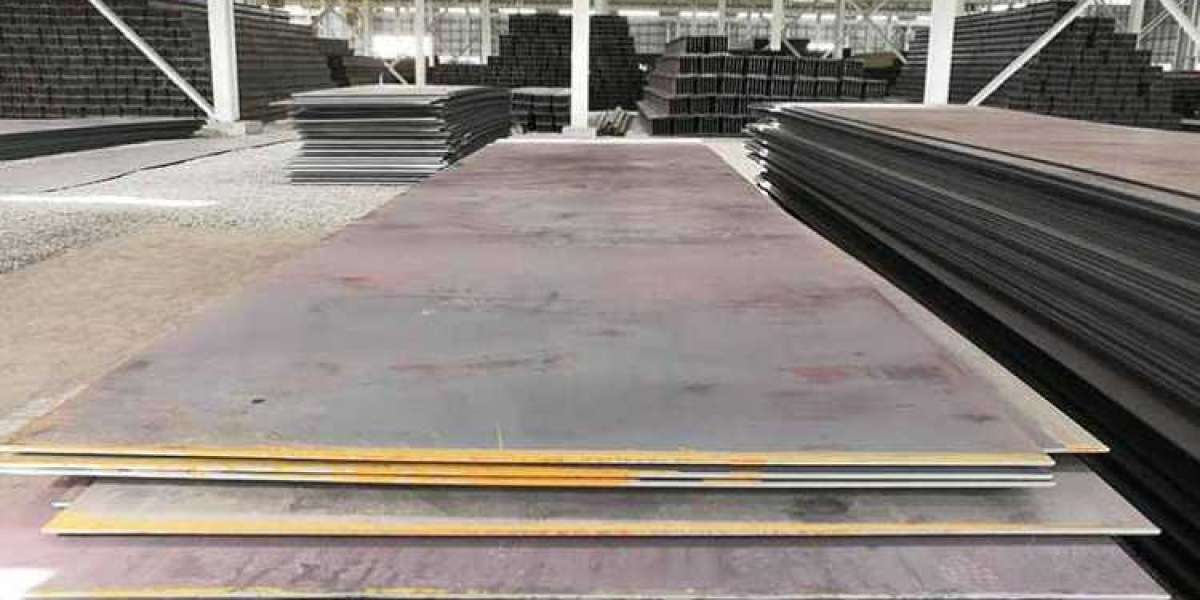Forecast Report
The MS Plate Price Forecast offers crucial insights into the expected price trends of mild steel plates, an essential component in construction, manufacturing, and various industrial applications. As we approach the new fiscal period, stakeholders in the steel industry are keenly analyzing factors that influence MS plate prices. This report provides an in-depth look at the current and future state of the MS plate market, examining trends, demand-supply dynamics, and market influences to help businesses and investors make informed decisions.
Request a free sample copy in PDF: https://www.expertmarketresearch.com/price-forecast/ms-plate-price-forecast
Outlook
The outlook for MS plate prices is shaped by a variety of factors including raw material costs, production capacities, and economic conditions. Mild steel plates, known for their versatility and cost-effectiveness, are a fundamental material in a wide range of applications from structural components in construction to machinery parts.
Read Full Report With Table Of Contents – https://www.expertmarketresearch.com/price-forecast/ms-plate-price-forecast/requestsample
In recent years, the MS plate market has experienced notable price fluctuations due to several factors. As we look forward, the market is expected to encounter both opportunities and challenges. On one hand, the demand for MS plates in construction and manufacturing continues to be strong, driven by ongoing infrastructure projects and industrial activities. On the other hand, fluctuations in raw material prices, particularly for iron ore and coking coal, as well as energy costs, will play a significant role in determining price trends.
Regional factors will also influence the outlook. In regions with robust construction activities, such as Asia-Pacific and North America, demand for MS plates is likely to remain high. Conversely, in areas facing economic slowdowns or overcapacity issues, price pressures may be more pronounced. Additionally, global trade policies and tariffs could impact prices by affecting the cost of imports and exports.
Market Dynamics
The MS Plate Price Forecast is intricately linked to several market dynamics that drive price changes. Understanding these dynamics is essential for navigating the complexities of the steel market.
Raw Material Costs: The primary raw materials for MS plates are iron ore and coking coal. Variations in the prices of these raw materials directly impact the cost of steel production. Recent years have seen significant volatility in commodity prices due to supply chain disruptions and geopolitical tensions. For instance, disruptions in major iron ore-producing regions or fluctuations in coal prices can lead to increased production costs for MS plates, which are then passed on to the market in the form of higher prices.
Production Capacities: Steel production capacities play a critical role in determining MS plate prices. In recent years, there has been significant investment in new production facilities and technological upgrades in steelmaking processes. While this has the potential to increase supply and moderate prices, overcapacity in certain regions can lead to price reductions and increased competition among producers.
Energy Costs: The steel production process is highly energy-intensive, and energy costs constitute a substantial portion of overall production costs. Fluctuations in energy prices, particularly electricity and natural gas, can have a significant impact on MS plate prices. For instance, sharp increases in energy prices can lead to higher production costs, which may drive up MS plate prices.
Economic Conditions: Broader economic conditions, including GDP growth rates, industrial production levels, and infrastructure investments, influence the demand for MS plates. Strong economic growth and high levels of industrial activity typically drive up demand for steel products, while economic slowdowns can lead to reduced demand and downward pressure on prices.
Trade Policies and Tariffs: Global trade policies and tariffs can affect MS plate prices by altering the cost of imports and exports. Recent trade tensions and tariff implementations have impacted the steel market, leading to price fluctuations and changes in trade flows. For instance, tariffs on steel imports can lead to higher domestic prices, while trade barriers can disrupt supply chains and affect market dynamics.
Demand-Supply Analysis
A thorough Demand-Supply Analysis of the MS plate market provides valuable insights into how demand and supply factors interact to shape price trends. The key components of this analysis include:
Demand Drivers: The demand for MS plates is primarily driven by sectors such as construction, automotive, and manufacturing. In the construction industry, MS plates are used in structural applications, such as beams, columns, and frames. The expansion of infrastructure projects, including roads, bridges, and buildings, continues to drive demand for these plates. Additionally, the automotive industry uses MS plates for manufacturing vehicle components, while the manufacturing sector relies on them for machinery and equipment.
Supply Constraints: On the supply side, factors such as production capacity, raw material availability, and logistical challenges play a significant role. Supply constraints can arise from disruptions in raw material supply chains, production outages, or transportation issues. For example, natural disasters, political instability, or supply chain disruptions in key producing regions can impact the availability of MS plates and lead to price increases.
Regional Variations: The demand-supply balance varies across different regions. In regions with high construction activity and industrial growth, such as Asia-Pacific and North America, demand for MS plates remains strong. Conversely, regions experiencing economic challenges or oversupply issues may face downward pressure on prices. Additionally, regional trade policies and tariffs can influence the supply of MS plates and impact prices.
Market Trends: Emerging trends, such as advancements in steel production technologies and shifts in industry practices, also affect the supply-demand dynamics. Innovations in production methods, such as the use of electric arc furnaces or improvements in steelmaking efficiency, can impact production costs and supply levels. Similarly, changes in industry standards or consumer preferences can influence demand patterns.
Extensive Forecast
The Extensive Forecast for MS plate prices involves analyzing short-term and long-term trends to provide a comprehensive outlook.
Short-Term Forecast: Over the next 1-2 years, MS plate prices are expected to remain volatile due to ongoing fluctuations in raw material costs, energy prices, and economic conditions. Short-term price movements will be influenced by factors such as seasonal demand variations, production disruptions, and trade policies. While periods of high demand may drive up prices, oversupply or economic slowdowns could lead to price reductions.
Long-Term Forecast: In the longer term, the MS plate market is likely to experience gradual price increases, driven by sustained demand from key industries and potential cost pressures from raw materials and energy. Continued investment in infrastructure and industrial projects, coupled with economic growth, will support demand for MS plates. However, the pace of price increases will be moderated by factors such as technological advancements, production capacity expansions, and shifts in global trade dynamics.
Sectoral Impact: Specific sectors will experience varying impacts from price trends. The construction sector may see price increases due to high demand for infrastructure projects, while the automotive industry could benefit from innovations in production techniques that reduce costs. Additionally, fluctuations in raw material prices will have differing effects on various industries, influencing their overall cost structures and pricing strategies.
Detailed Insights
In summary, the MS Plate Price Forecast highlights a complex interplay of factors that shape price trends in the mild steel plate market. The key drivers include raw material costs, production capacities, energy prices, economic conditions, and trade policies. As we look ahead, the MS plate market is expected to experience both short-term volatility and long-term growth, influenced by a range of economic, industrial, and technological factors.
For businesses and stakeholders in the steel industry, understanding these dynamics and staying informed of market trends will be crucial for navigating the challenges and opportunities that lie ahead. By leveraging insights from the forecast report, companies can better anticipate price movements, optimize their procurement strategies, and make informed decisions to remain competitive in the evolving market landscape.
Related Reports
- https://www.expertmarketresearch.com/price-forecast/monochloroacetic-acid-price-forecast
- https://www.expertmarketresearch.com/price-forecast/yeast-extract-price-forecast
Media Contact:
Company Name: Claight Corporation
Contact Person: Amanda Williams, Corporate Sales Specialist – U.S.A.
Email: [email protected]
Toll Free Number: +1-415-325-5166 | +44-702-402-5790
Address: 30 North Gould Street, Sheridan, WY 82801, USA
Website: https://www.expertmarketresearch.com



